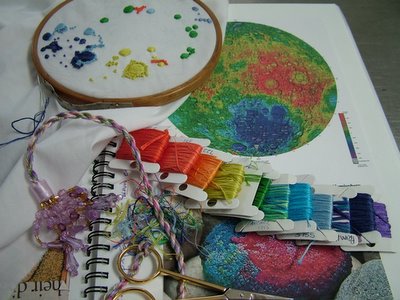I am an order-generator
July 31st, 2009 at 6:52 pm (Books, Volunteering)
 Today I got to show off my ability to alphabetize. I’ve been volunteering at the library for the past two months, and I have encouraged them to give me any and all odd jobs that may need to be done (I do love variety!). So first I served as a greeter, helping patrons find their way around the library; then I stood around the computers and helped people log in, save documents, and print; then I learned how to mend books (repair spines, tape dust jackets, repair ripped pages); then I learned how to re-barcode books. They’re now discussing how to set up a special station near the computers for me, so that I can do one of these craft-tasks but be “on call” for any computer assistance that is needed, freeing up the reference librarians to do, well, reference things.
Today I got to show off my ability to alphabetize. I’ve been volunteering at the library for the past two months, and I have encouraged them to give me any and all odd jobs that may need to be done (I do love variety!). So first I served as a greeter, helping patrons find their way around the library; then I stood around the computers and helped people log in, save documents, and print; then I learned how to mend books (repair spines, tape dust jackets, repair ripped pages); then I learned how to re-barcode books. They’re now discussing how to set up a special station near the computers for me, so that I can do one of these craft-tasks but be “on call” for any computer assistance that is needed, freeing up the reference librarians to do, well, reference things.
I had also offered to help out with book shelving. Apparently this task falls into a sensitive subject zone: how much work to allow volunteers to do versus work that is reserved for qualified librarians (or librarians in training). Initially I was told that shelving was for actual employees (called “pages”, which still cracks me up), but then today that’s exactly what I was asked to do. The volunteer coordinator said, “I told them that you have a Ph.D.”
I was first given a test cart of books to alphabetize. My trainer gave me tips that effectively translated to “I like to do selection sort, but let’s start you with insertion sort because it’s more straightforward.” Alas, when he checked my results, I had in fact mis-ordered one Babysitter’s Club book. I was however forgiven this mistake and then sent off to shelve the books.
It ended up taking me over an hour to shelve about 30 books. Juvenile Fiction was in a serious state of disarray. For every few books I shelved, there was a new one I discovered out of place that needed fixing. I was also “fronting” the shelves (bringing all the books forward to the same level for easy viewing). The amount of existing disorder was likely not attributable to the “pages” but instead to the happy, careless browsing of the under-10 crowd. I spent a good ten minutes on the Babysitter’s Club section alone (apparently I am not the only one who has made a mistake there). There are over 100 books in this series, most of which the library owns. I garnered great satisfaction from each decrease in entropy that I achieved. Really, is there a task better suited to my sensibilities? I already start twitching from the effort it takes to avoid doing this in bookstores.
As a side effect of this shelving, I now know the Juvenile Fiction section better, and can even respond usefully when children ask where the Horrible Harry or Magic Treehouse or High School Musical books are. Next time I may even be permitted to work with the Dewey Decimal System. Non-fiction, here I come!
(Book image by David Sillitoe)



